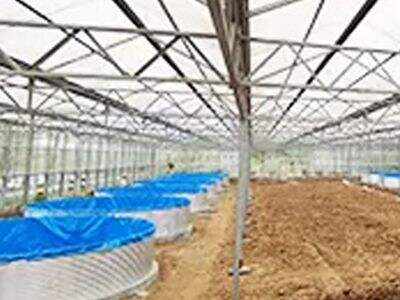Aquaculture is essential to feeding the world in the future. For many people, fish aren't just delicious; they're also an essential part of a healthy diet. Fish also provide important nutrients in many locations, which are essential for health and wellness. Growing fish can be costly, though, creating a challenge for some farmers when it comes to turning a profit. That’s where low-cost methods known as Recirculating Aquaculture Systems (RAS) come to the rescue. With the right tools and knowledge, fish can be farmed more easily and cheaply.
In this introduction, we will learn how these low-cost RAS approaches are the farmers' pathway to prosperity. In this approach, we are going to present some examples of farmers who actually made money through this approach. These success stories will demonstrate just how innovative and resourceful Farmers can be in finding solutions. We'll also hear from farmers who've attempted low-cost RAS, and what they learned along the way.
How Simple, Affordable RAS Techniques Benefit Farmers
RAS raised at a low price can help farmers [in many aspects] significantly. First, they save farmers some money, and who doesn’t love that? These methods contribute to raising not only more fish, but also higher-quality fish. One of the things that is so great about these systems is they recycle water and waste. That also means farmers slash the amount of water they would use with more traditional techniques.
In addition to housing fish, inexpensive RAS systems maintain a fish’s environment, which is necessary for their health. Less stress and what can make fish sick happens when farmers maintain more control over the water and the area fish inhabit. By bringing all these advantages together, it allows farmers to grow more fish at a lower cost, leading to increased profits for them. This is key, as when farmers are able to earn more money, they can then feed their families and reinvest it back into their farms.
Low-Cost RAS Methods: Success Stories
At the same time, very low-cost RAS methods are emerging all over the world and are working![7] In India, farmers found that employing RAS technology could make them 40% more profitable relative to other fish building methods such as cage or pond-based farming methods. It is a massive sum of surplus money that will improve farmers lives. But in Bangladesh, farmers have managed that with low-cost RAS the profit of raising fish can be two to three times higher than regular ponds. That, in turn, means they can sell more fish and make more money, which is a huge boost.
In Kenya, small-holder farmers have developed a low-cost RAS using local materials. What is incredible about this system is that it can be built by anyone and regardless of how much experience you have. All of this makes it possible for lots of individuals who do not even need to be experienced to start fish farming.
New Ideas in Low-Cost RAS
Alongside all of these success stories, there are also lots of new ideas that are further improving low-cost RAS. Some farmers are, for example, testing pumps and aeration systems run on solar energy. These systems can lower energy bills, and offer an eco-friendly and renewable power source. That translates to farmers saving on energty bills while still caring for their fish.
Other solutions include natural filtration systems like plant-based filters that help improve the water's quality and minimize waste. This is a clever method for both cleaning up the ecosystem and breeding fish. Some farmers are even experimenting with different kinds of fish that are hardier and can thrive in harsher environments. Through innovation and experimentation, farmers may learn new and better ways to prosper.
How Low-Cost RAS Contributes to Fish Farming Expansion
In summary, inexpensive RAS-tools are playing a role in the expansion of aquaculture globally. As farmers increasingly adopt these technologies, they are able to produce more fish for less money. This matters because it helps make fish cheaper for everyone who wants to eat them. When fish is more affordable, it can mean healthier diets for many people.
Moreover, by employing RAS technology, the effect of fish farming on the environment can also be minimized. Farmers who do so also consume less water and produce less waste, thus preserving natural resources and avoiding damage to the planet. Not only is this beneficial for farmers — it prevents wastage from their produce — but it is also good for the environment.
RAS Experiences: Farmers Share Their Low-Cost RAS Experiences
Finally we were able to speak to a farmer or two successfully employing low-cost RAS on their farms. In India, one farmer stated how much RAS technology has reduced his costs of production. This enabled him to boost his earnings and run his business successfully. He said that now, unlike with traditional pond farming, he can raise fish year round.
A farmer in Bangladesh mentioned that he was able to make his fish production easier by utilizing RAS tech. Now selling his fish at a higher price, life is much better. We heard from a group of farmers in Kenya how a low-cost RAS system has allowed them to raise fish where they couldn't before. This means the fish gets dropped in communities that may have had limited access to fish before.
Overall, low-cost RAS is a promising novel approach to fish farming. They facilitate reduction in costs and boost in fish production, thereby making fish affordable for all. They also responsibly protect the environment while doing so. Fish farming will continue to flourish as more farmers begin to employ these techniques. As a company working across the full aquaculture value chain, we are committed to giving back to our farmers with innovative farming technology as we know that the right expertise and experience can help elevate low-cost RAS methods to new methods of producing and consuming a variety fish.












































